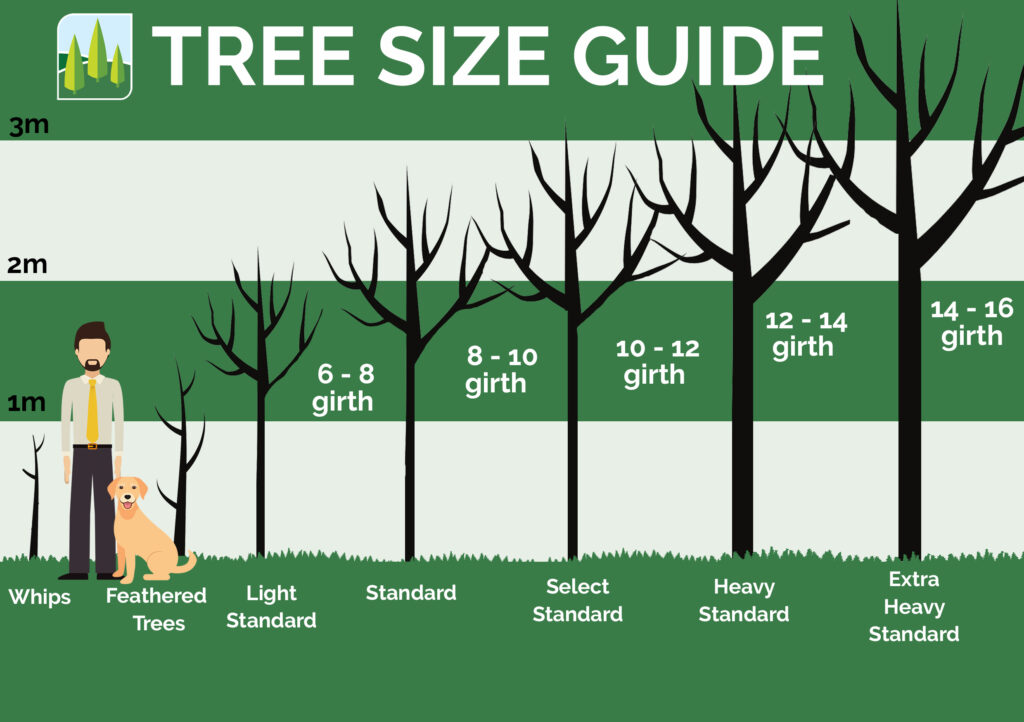
With decades of experience in the production and wholesale supply of trees, we offer a vast range—from half standards to extra heavy specimens. Supplying over 60,000 trees annually across 2,500 variants, we help landscape contractors, developers, and designers create instant, lasting impact using mature, well-established trees.
We supply on a wholesale basis and assume our customers possess appropriate horticultural knowledge, particularly regarding planting methods, handling, and aftercare. Tree selection should always be site-specific—only the specifier can determine the true suitability of a species or form for each project.
While most contractors understand the importance of seasonal timing and site conditions, we occasionally encounter unrealistic expectations. Unfortunately, trees are not invincible—and cannot be guaranteed to survive poor planting practices or planting out of season.
We’ve often investigated reported plant failures and found serious malpractice, such as:
We take great pride in growing these trees—often for five years or more—and it’s critical that proper care is taken during the establishment phase.
When planting in dry or windy weather, it’s essential to ensure trees and shrubs can take up enough water through their limited root system to balance:
Larger and evergreen trees require even more care. But remember: overwatering can be just as damaging as underwatering. Consistent, measured irrigation is key to survival and success.
Please see the below girth, height, weight and dimension guides. For more information, call us on 01423 330234.

Tree Size Guide
Understanding tree forms is essential when specifying or purchasing. Here’s a breakdown of the most common types:

What is a whip?
A whip is a young transplant, typically 2–4 years old, consisting of a single, slender stem with little or no side branching. This natural form reflects how certain species, such as Acer platanoides or Prunus avium, grow in their early years. Whips are often used for hedging or long-term projects.

What is a feathered tree?
A feathered tree has a strong central leader with lateral branches running down nearly to ground level. This structure is ideal for projects requiring a naturalistic or full-bodied look, and it reflects the species’ inherent branching characteristics.

What is a standard tree?
A standard tree features a clear upright stem supporting a branched crown. These are widely used in landscape design due to their consistent form and presence.
Forms include:
Light standard
Standard
Select standard
Heavy standard
Extra heavy standard
Advanced heavy standard
The larger the tree, the greater the visual impact—but also the greater the care required during planting.

When can we buy bare root and root ball trees?
Bare root and rootball trees are available between November and March, when trees are in a dormant state. This is the ideal time for planting, giving the roots time to establish before the growing season begins.

Girths and heights
We are often asked about tree sizes to help with logistics, transportation, and on-site planning. The following guidelines apply primarily to standard trees (not multistem or feathered forms):
Girth (measured in cm) is generally a more accurate indicator of maturity than height.
Girth should be measured at 1m above ground level.
If you’re unsure, our team can provide specific measurements for each tree species or form.

Weights and dimensions
Tree weight and dimensions can vary widely based on species, soil, and moisture content.
As a general rule:
Trees with a girth above 12–14cm will likely require lifting equipment for safe handling and installation.
Always assess the planting site, access restrictions, and lifting requirements before arranging delivery.
This guide offers approximate information only. For detailed advice on selecting, planting, and caring for trees, please contact our knowledgeable team:
📞 Call: 01423 330234
| Tree type | Tree girth (cm) | Tree height (cm) | |
|---|---|---|---|
| Light Standard (LS) | 6-8cm girth | 200-250cm | |
| Standard (S) | 8-10cm girth | 250-300cm | |
| Select Standard (SS) | 10-12cm girth | 300-350cm | |
| Heavy Standard (HS) | 12-14cm girth | 300-350cm | |
| Extra Heavy Standard (EHS) | 14-16cm girth | 350-400cm | |
| Advanced Heavy Standard (AHS) | 16-18cm girth | 400-450cm | |
| Semi-mature | 18-20cm girth | 450-500cm | |
| Semi-mature | 20-25cm girth | 450-550cm | |
| Semi-mature | 25-30cm girth | 500-600cm |
| Girth size | Container Size (approx) | Container weight (approx) | Container dimension | Rootball size (approx.) | Rootball weight (approx.) |
|---|---|---|---|---|---|
| 6-8cm girth | 25L + | 15kg | 40 x 35 | 30-40cm | 30kg |
| 8-10cm girth | 40L + | 20kg | 40 x 35 | 40cm | 50kg |
| 10-12cm girth | 40L + | 20kg | 40 x 35 | 50cm | 50kg |
| 12-14cm girth | 60L + | 20kg | 50 x 40 | 60cm | 60kg |
| 14-16cm girth | 80L + | 50kg | 50 x 40 | 60cm | 80kg |
| 16-18cm girth | 80L + | 50kg | 50 x 40 | 70cm | 80kg |
| 18-20cm girth | 80L + | 50kg | 50 x 40 | 70-80cm | 150kg |
| 20-25cm girth | 200L + | 250kg + | 80 x 50 | 80-90cm | 225kg |
| 25-50cm girth | 200L + | 250kg + | 80 x 50 | 90-100cm | 250-400kg |